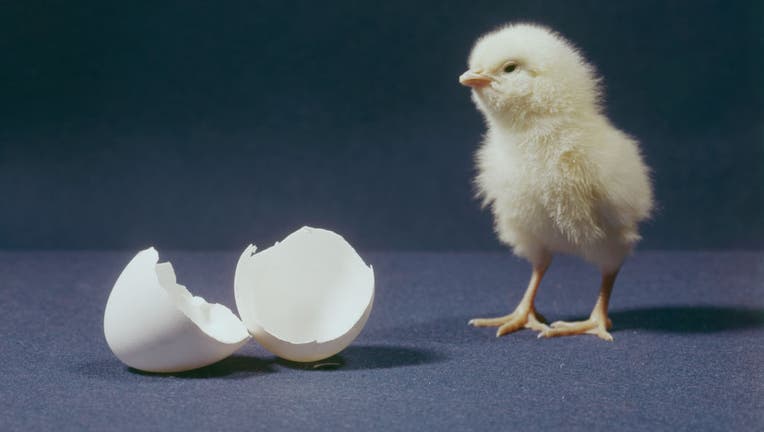Which came first, the chicken or the egg? We may have an answer

Close-up of newly hatched chick
GENEVA - Scientists in Europe said they may finally have an answer, or at least parts of it, to the age-old question: Which came first, the chicken or the egg?
The the question is more of a metaphor, In short, scientists said they have been experimenting and studying an ancient unicellular organism to learn more about embryonic development.
Before coming up with the answer, a team of researchers at the University of Geneva agreed that the first forms of life to appear on Earth were unicellular organisms, meaning a single cell such as yeast or bacteria.
They said later multicellular organisms, such as animals, started to develop from a single cell, like an egg cell.
RELATED: Giraffes could gain endangered species protections under US proposal
However, scientists said the transition from unicellular organisms to multicellular organisms is still "very poorly understood."
To understand the transition better, study author Omaya Dudin and his team decided to then focus on Chromosphaera perkinsii, or C. perkinsii, which is an ancient unicellular organism.
The cell has been around for billions of years, long before the existence of animals, according to the researchers.
‘‘Although C. perkinsii is a unicellular species, this behaviour shows that multicellular coordination and differentiation processes are already present in the species, well before the first animals appeared on Earth’," Dudin explained.
The team studied C. perkinsii and found that these cells, once they reach their maximum size, can divide without growing any further, thus creating multicellular organisms. The process is similar to how animal embryos are developed.
While it's still not definitive if the egg or chicken developed, scientists said more research is needed as they study but said studying the C. perkinsii has provided insight into how animals are formed.
"Future research will be essential to elucidate how spatial cell differentiation is established in C. perkinsii,"the team of scientists said in their paper. "Nevertheless, our study indicates that C. perkinsii represents a transitional form between temporal and spatial cell differentiation, providing insights into the evolutionary mechanisms that led to emergence of animal multicellularity."

